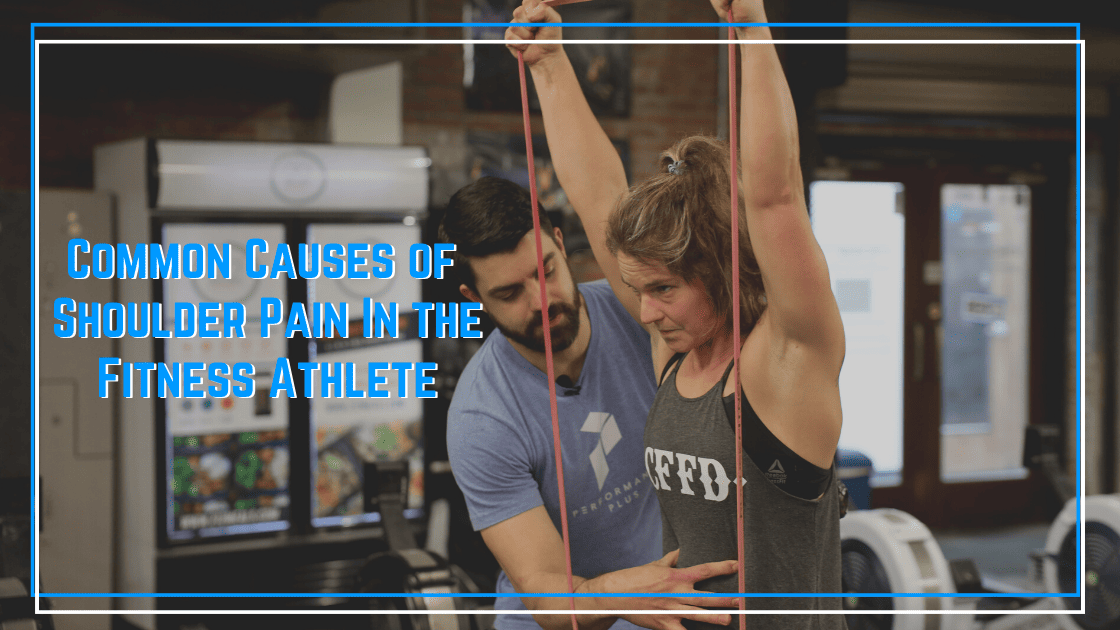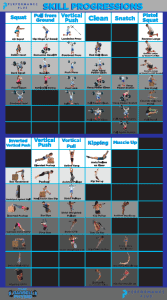With any form of intense training, the occasional injury happens. CrossFit is no exception to this. While research has repeatedly shown that CrossFit injury rates are not higher than other forms of recreational fitness activities, we have seen multiple studies agree that the shoulder is the most commonly injured area. If you are dealing with shoulder pain, understanding the most common causes of CrossFit shoulder injuries can help you game plan your rehab plan and improve your performance long term.
After reading this article, be sure to read my follow up blog on the best exercises to address the below causes.
Most Fitness Athlete Shoulder Injuries Come From Doing Too Much, Too Soon
Without a doubt, the biggest reason we see CrossFit shoulder injuries is individuals doing too much volume. CrossFit was built on the philosophy that workout intensity (that is, going all out in shorter bouts of work) is the key to positive adaptations to exercise. CrossFit HQ regular preaches pushing intensity over volume.
But what we see in most gyms is very different. Often gyms program strength, skill, and conditioning pieces all in one workout. Then an athlete starts adding some extra work to their workouts without also dialing in their recovery (sleep, nutrition, etc.). Next thing you know, they have tweaked a shoulder.
Think of training as a bank account. You have a limited amount of income (recovery), and continually adding more expenses (training volume) can result in your over drafting from your account (injury).
Lack of Strict Gymnastics Strength
The second most common cause of shoulder injury I see is athletes progressing to advanced gymnasts skills too rapidly. The kipping pull-up is NOT a substitute for strict pull-ups. Instead, it is a progression to use AFTER strict strength has been established to allow for more work in less time (more workout intensity). The same can be said about muscle-ups and handstand work. We always need to build strength and control before adding dynamic movement to the equation.
I discuss the need for strict strength first in more depth in my article “The Truth About Kipping Pull-Ups.” You can also download the following movement progression chart for a laid-out plan for long-term gymnastics strength progress!
Specifically, I commonly see weakness of the lats being an issue that limits strength progression. I discuss that more in my article “The Importance of Lat Strength in CrossFit.”
Poor Technique with Kipping Pull-ups
Once an athlete begins performing kipping pull-ups, understanding proper mechanics is key to minimizing injury risk and maximizing performance. Many athletes perform kipping pull-ups with excessive hip motion rather than the shoulders and core controlling the kip. This results in the shoulder having a lot of extra stress placed on it.
My Performance Plus partner, and gymnastics strength expert, Pamela Gagnon, discusses kipping mechanics in this video.
Lack of Rotator Cuff Strength
The rotator cuff is an incredibly important group of muscles surrounding and provides stability to the shoulder joint. If they are not strong enough to tolerate the amount of loading placed on them during CrossFit, they can start to get irritated and painful. Rotator cuff strengthening is usually a very important component to rehabbing CrossFit shoulder pain. The following YouTube playlist has a large collection of shoulder strengthening exercises.
Poor Shoulder Mobility and Gymnastics Shoulder Pain
There are very few other sports that challenge shoulder mobility near as much as CrossFit. Many movements take the shoulder joint far beyond the range of motion we see in machine-based lifting, running, basketball, and just about any other sports we can look at.
If shoulder mobility is limited, we will often see technique changes that can stress the shoulder structures and lead to CrossFit shoulder injuries. An example of this can be seen in the following video, where lat tightness results in the shoulder rotating and elbows bending during kipping pull-ups. This compensation is commonly seen in individuals dealing with shoulder pain. The Instagram post will take you through a screen and give a few exercise examples. For more shoulder mobility help, check out our Overhead Mobility Overhaul program.
View this post on Instagram
Poor Thoracic Spine Mobility
Many CrossFit athletes also have a stiff thoracic spine (upper back). This mobility deficit is commonly seen in individuals dealing with shoulder pain. With any overhead activities, the shoulder not only raises, but the upper back also extends. If the upper back lacks mobility, this often places increased stress on the shoulder to make up for that lack of motion. This article will take you through a thoracic mobility test and several great exercises to improve upper back mobility.
We have several programs inside of Performance Plus to help address the above issues if you are tired of dealing with nagging shoulder pain in CrossFit:
- Bulletproof Shoulders – great shoulder strength program for post-rehab strengthening to reduce the risk of future injuries
- Building Lats to Fly – a great program for building lat strength and kipping mechanics
- Overhead Mobility Overhaul – a four-week plan designed to improve your overhead mobility
- Thoracic Mobility Overhaul – four weeks to a more mobile upper back
- We have 40+ plans inside of Performance Plus to help you reach your fitness goals! Whether you are working on your very first pull-up or want to push your muscle-up endurance, we have you covered!







